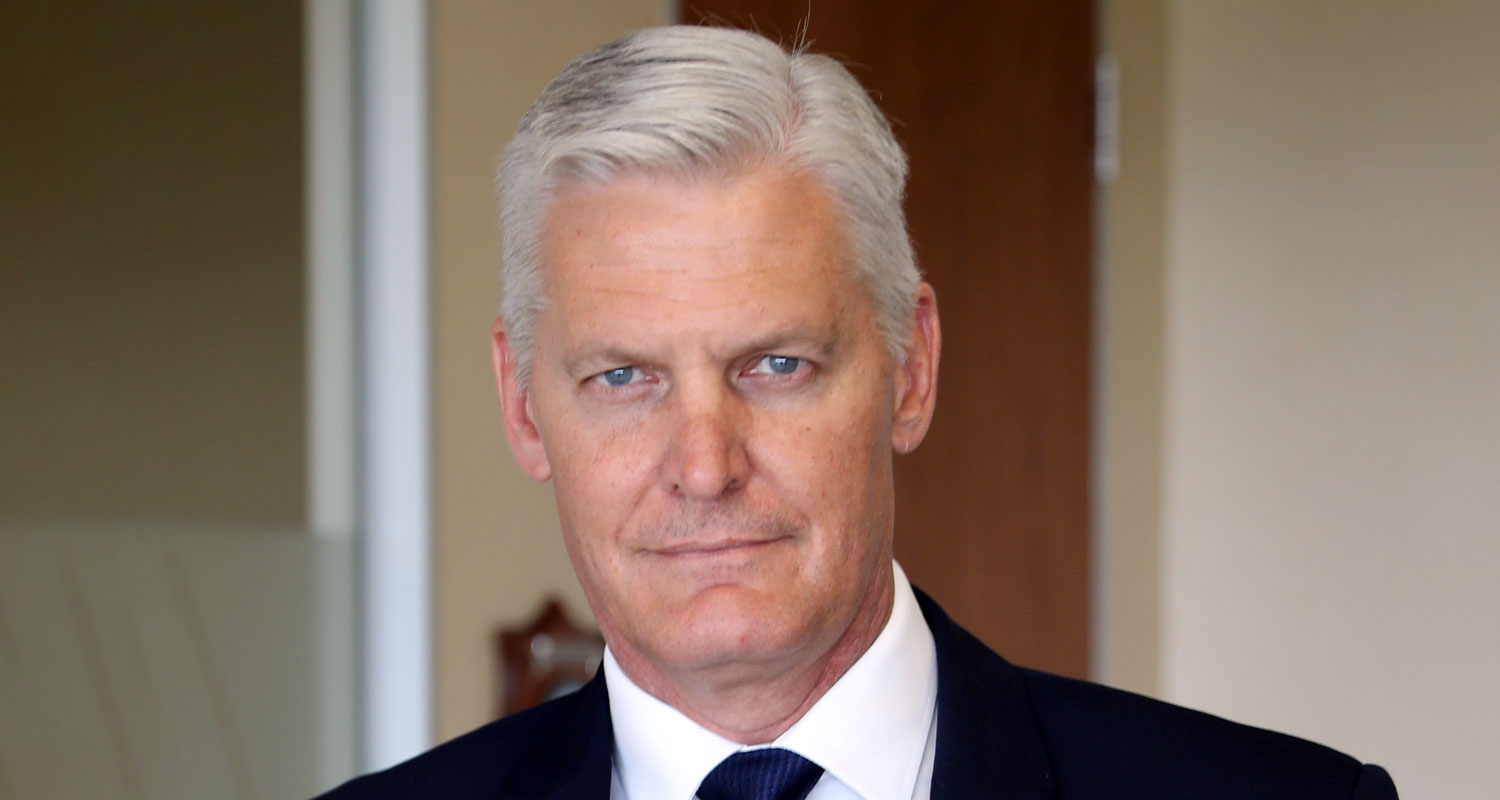 Eskom is recruiting its 14th chief executive officer in a decade, but finding someone who can do the job and actually wants it will be a tall ask.
Eskom is recruiting its 14th chief executive officer in a decade, but finding someone who can do the job and actually wants it will be a tall ask.
The state-owned utility supplies more than 90% of the nation’s electricity, has more than 42 000 employees and doesn’t earn enough to cover its operating costs and service its mountain of debt. The utility’s old and poorly maintained plants can’t meet demand for power and have forced it to institute rolling blackouts since 2008. The energy crisis has hamstrung the economy and raised the ire of the government, the ruling party, labour unions and the public.
André de Ruyter, who’s served as CEO for almost three years, announced on Wednesday he’ll quit at the end of March. He told News24 that it was untenable for him to stay on given that senior government officials had repeatedly attacked him and Eskom’s strategy.
Mineral resources & energy minister Gwede Mantashe has said that De Ruyter is unsuitable for the CEO position and accused Eskom of “agitating to overthrow the state”.
Phakamani Hadebe, the previous permanent appointee, resigned after less than two years because the “unimaginable demands” of the job took a toll on his health.
“A replacement seems so difficult to find, never mind to attract,” Citibank South Africa analysts Gina Schoeman and Alexander Rozhetskin said in a note to clients.
There’s also been an exodus of other senior staff: two heads of the company’s flailing generation division and its energy transition manager have quit this year alone, while chief operating officer Jan Oberholzer is set to retire in April.
Investors are concerned about management stability at Eskom and the knock-on effect it will have on the economy. The yield on Eskom’s 2028 dollar bonds that don’t carry a government guarantee climbed two basis points on Thursday to 11.25%, after rising nine basis points on Wednesday, while the rand weakened as much as 1.2% against the dollar.
Longstanding problems
Eskom’s problems date back to the 2000s, when the government failed to heed warnings that generation capacity was running out. Two giant new coal-fired power plants were eventually approved in 2007 that were expected to cost R163-billion and be completed within eight years. But those projects have been plagued by mismanagement and cost overruns that have crippled Eskom’s finances, with the likely final price tag having ballooned to more than R460-billion.
A judicial commission of inquiry also found Eskom was at the epicentre of a looting spree of taxpayer funds during former President Jacob Zuma’s nine-year tenure.
De Ruyter has made some headway in getting rid of compromised officials and tackling graft, but he’s fallen short on a pledge to end blackouts within two years of taking office. Load shedding has been instituted on a record 189 days this year.
The CEO’s plans to accelerate the retirement of coal-fired generation capacity and produce more green energy also ran into opposition from Mantashe and labour groups who fear job losses at plants and coal mines. The National Union of Mineworkers described his exit as “long overdue”, because he’d failed to find a viable strategy to address the blackouts.
“We must face the reality that Eskom is simply unmanageable within the political context,” said Peter Attard Montalto, head of capital markets at Intellidex. De Ruyter “did everything he possibly could within that context, but ultimately was not enough given non-nonsensical demands of political principals”, he said.

National treasury said in October that the government may shift between one-third and two-thirds of the utility’s debt of about R400-billion onto the government’s balance sheet, with details to be announced in the February budget.
While that may help put Eskom’s finances on a more sustainable footing, it won’t address a more immediate crisis: the utility needs R19.5-billion to buy diesel to run turbines that are used to bolster generation during peak-demand periods and mitigate blackouts. Finance minister Enoch Godongwana said last month the government simply doesn’t have the money.
Longer term, De Ruyter’s successor will have to navigate a political minefield when replacing almost half of Eskom current installed capacity that’s due to be lost by 2035 as old plants are shut, and boosting output to cater for even more demand.
“De Ruyter needed more time to turn things around at Eskom,” said Raymond Parsons, a professor at North-West University’s Business School in Potchefstroom. “There are no quick solutions to the complex energy crisis and load shedding situation.” — Reported with Paul Burkhardt, Prinesha Naidoo, Robert Brand and S’thembile Cele, (c) 2022 Bloomberg LP




